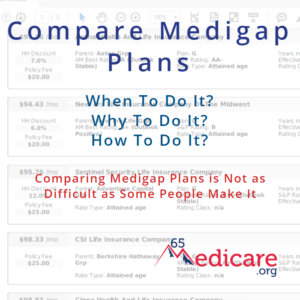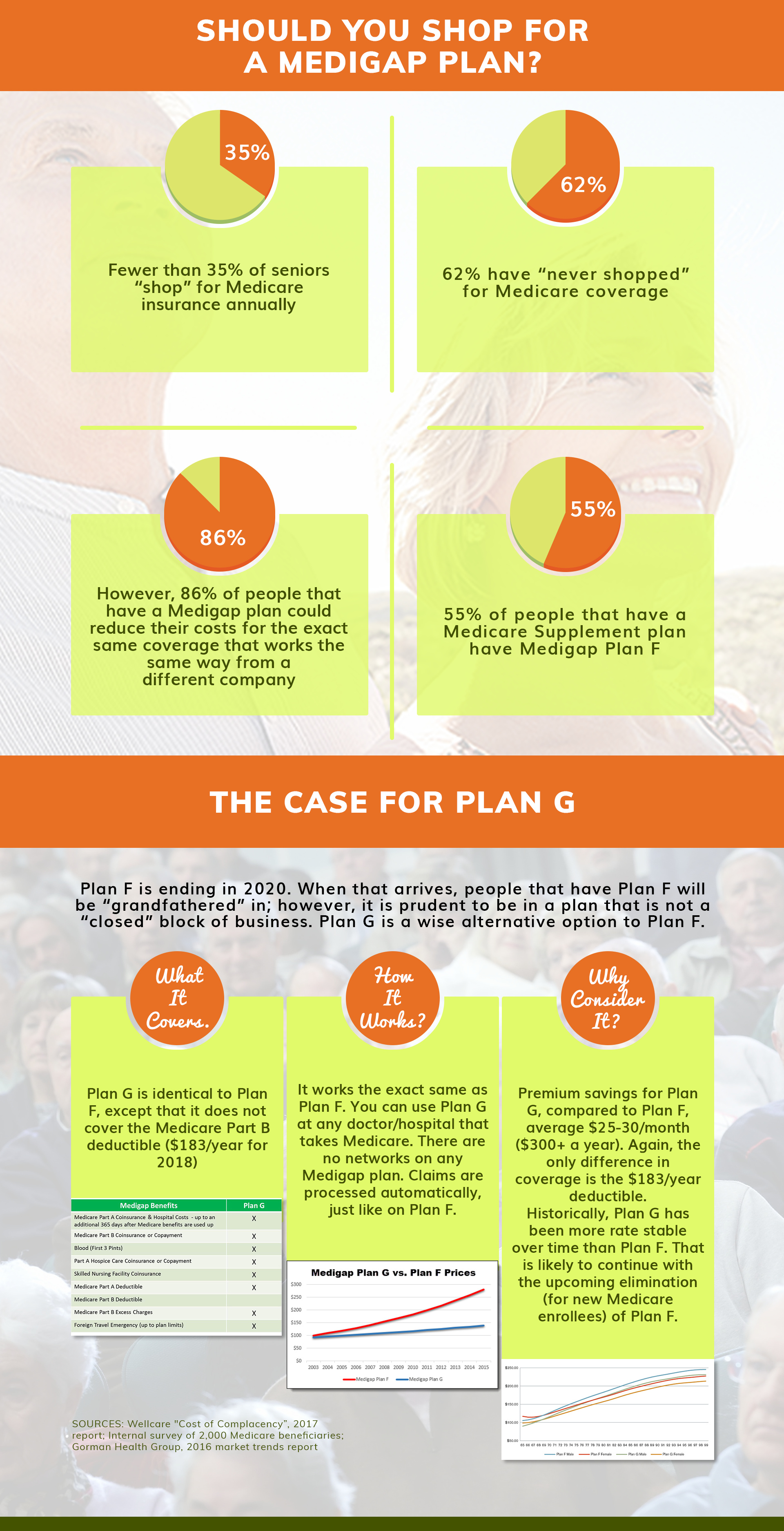Embed This Image On Your Site (copy code below):
Compare Medigap Plans – When, Why, and How To Do It
It is financially wise to compare Medigap plans. Whether you are just  turning 65 or are already on Medicare, comparing Medigap plans can potentially save you hundreds of dollars a year and thousands of dollars over your lifetime.
turning 65 or are already on Medicare, comparing Medigap plans can potentially save you hundreds of dollars a year and thousands of dollars over your lifetime.
First and foremost, it’s important to understand that Medigap plans are Federally-standardized. All plans must go by Medicare’s Medigap coverage chart (see chart here). According to Medicare itself, “the cost of Medigap policies can vary widely. There can be big differences in the premiums that different insurance companies charge for exactly the same coverage” (taken from Medicare’s “Choosing a Medigap Policy” booklet).
So, understanding that crucial fact, let’s look at when you should compare Medigap plans, why you should and how exactly to go about doing it.
When Should You Compare Medigap Plans?
 If you are turning 65 or going on Medicare for the first time, you get a 6-month open enrollment period during which you can choose any Medigap plan from any company that offers them in your state without any restriction or pre-existing conditions limitations/exclusions. It is vital to compare Medigap plans during this time period because, after this initial 6-month window, you typically will have to “qualify medically” to obtain a plan or switch plans (Medigap plans are not subject to the ACA pre-existing conditions limitations).
If you are turning 65 or going on Medicare for the first time, you get a 6-month open enrollment period during which you can choose any Medigap plan from any company that offers them in your state without any restriction or pre-existing conditions limitations/exclusions. It is vital to compare Medigap plans during this time period because, after this initial 6-month window, you typically will have to “qualify medically” to obtain a plan or switch plans (Medigap plans are not subject to the ACA pre-existing conditions limitations).
Another situation in which it is prudent to compare Medigap plans would be if/when your rate goes up on your current Medigap plan. Just like any other type of insurance, Medigap rates go up over time. If you are already on a Medigap policy and the rate does go up, it is wise to “shop” to see if another company offers the exact same benefits for a lower premium. In most cases, you will find that, if you’ve had your plan for several years, there are other options that are lower-priced/equal coverage.
A last situation that would/should prompt a comparison of Medigap plans would be if you are losing some other type of coverage (i.e. group/employer coverage, Medicare Advantage coverage). In these situations, even if you are already have Medicare Parts A & B, you are “guaranteed issue” into certain Medigap plans. This just means that you cannot be turned down based on your health or any pre-existing conditions that you have.
Why Should You Compare Medigap Plans?
Comparing Medigap plans is a crucial part of a sound financial plan for retirement. The number show that average healthcare expenditures in retirement, which have been increasing each year, are now at approximately $260,000 for a couple (from Fidelity study, 2016). This does not even take into account long-term care insurance or long-term care costs.
Because of the rapidly increasing costs of health care in retirement, having a Medigap plan and managing the cost of that plan is vital to financial well-being.
Comparing the costs of the Medigap plans is important because of the plan standardization referenced earlier. You are going to get the same coverage regardless of which company you choose – also, claims are all paid through the Medicare “crossover” system so there is no customer service/claims payments variation from company to company. However, rates can vary widely, with differences of as much as $100+/month in premium costs between companies for the exact same coverage. Choosing a plan without “shopping”, because the company has a “big name” or because your friend or family member says it is “best” is not always a wise idea.
The bottom line is that it is a good idea to keep more of your money and give less to insurance companies when that is an option. To do that, you must compare Medigap plans. So, how do you do it?
How Do You Compare Medigap Plans?
Comparing Medigap plans is much easier than most people realize. Whereas individual under-65 health insurance varies greatly in premiums, deductibles, networks, copay amounts, etc., Medigap plans only have one differentiating variable – price. Comparing them is easy to do and there are two options for doing so.
Option 1 is to obtain a list of the companies that offer Medigap in your state from your state’s department of insurance (the list on Medicare.gov has not proven to be accurate or updated regularly). Once you have that list, you can contact each company to obtain their premium information and any other information you wish to obtain to assist in your decision-making. Most states have 25-50 companies that offer Medigap, so this is certainly doable but is a daunting and time-consuming task.
The other option, option 2, is to use a trustworthy independent broker to compare Medigap plans. An independent broker works with all the insurance companies that do business in your state so that you can compare plans/rates in a centralized place. He or she is paid directly by the insurance companies, so it does not cost you anything. In reality, their commissions are built into the premiums you pay regardless of how you sign up for a plan, so you are paying for them whether you use them or not. The advantage to you is that you can compare rates, as well as get their expertise on experiences of other consumers and rate increase history/stability.
Overall, once you understand plan standardization and the reasons behind comparing plans, the process of comparing Medigap plans is quite simple and straight-forward.
_____________________
65Medicare.org is a leading, independent Medicare insurance  agency for people turning 65 and going on Medicare. If you have any questions about this information, you can contact us online or call us at 877.506.3378.
agency for people turning 65 and going on Medicare. If you have any questions about this information, you can contact us online or call us at 877.506.3378.


